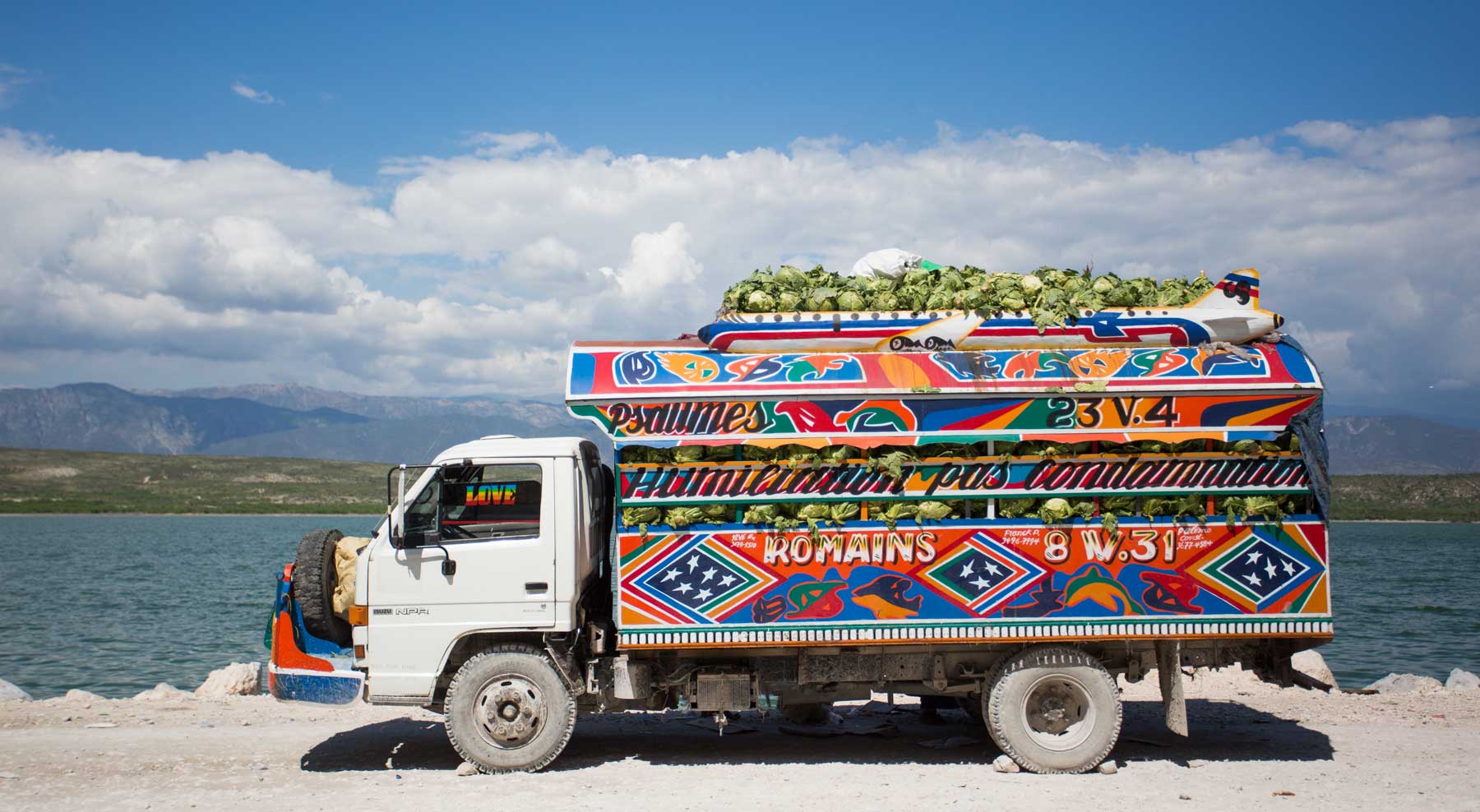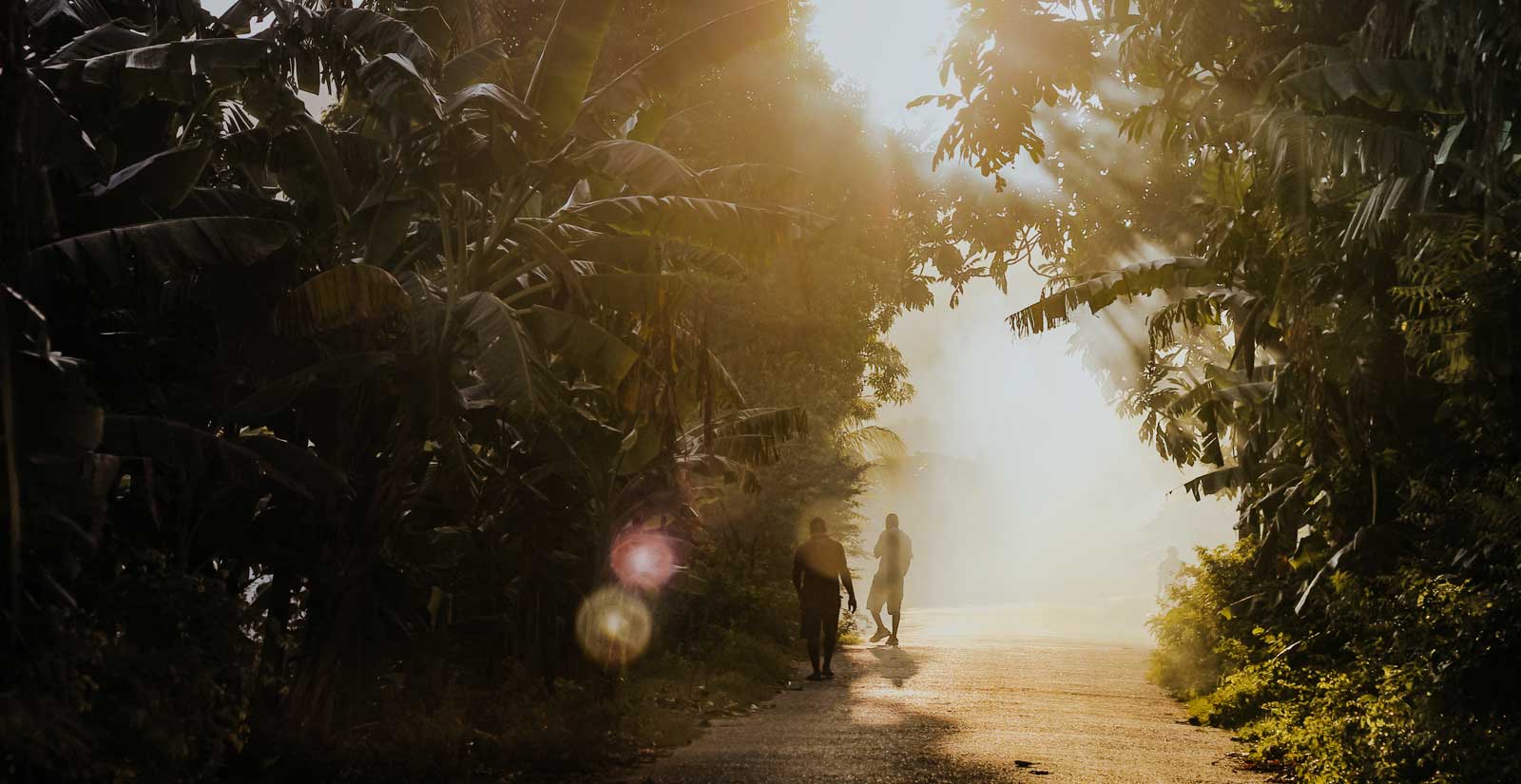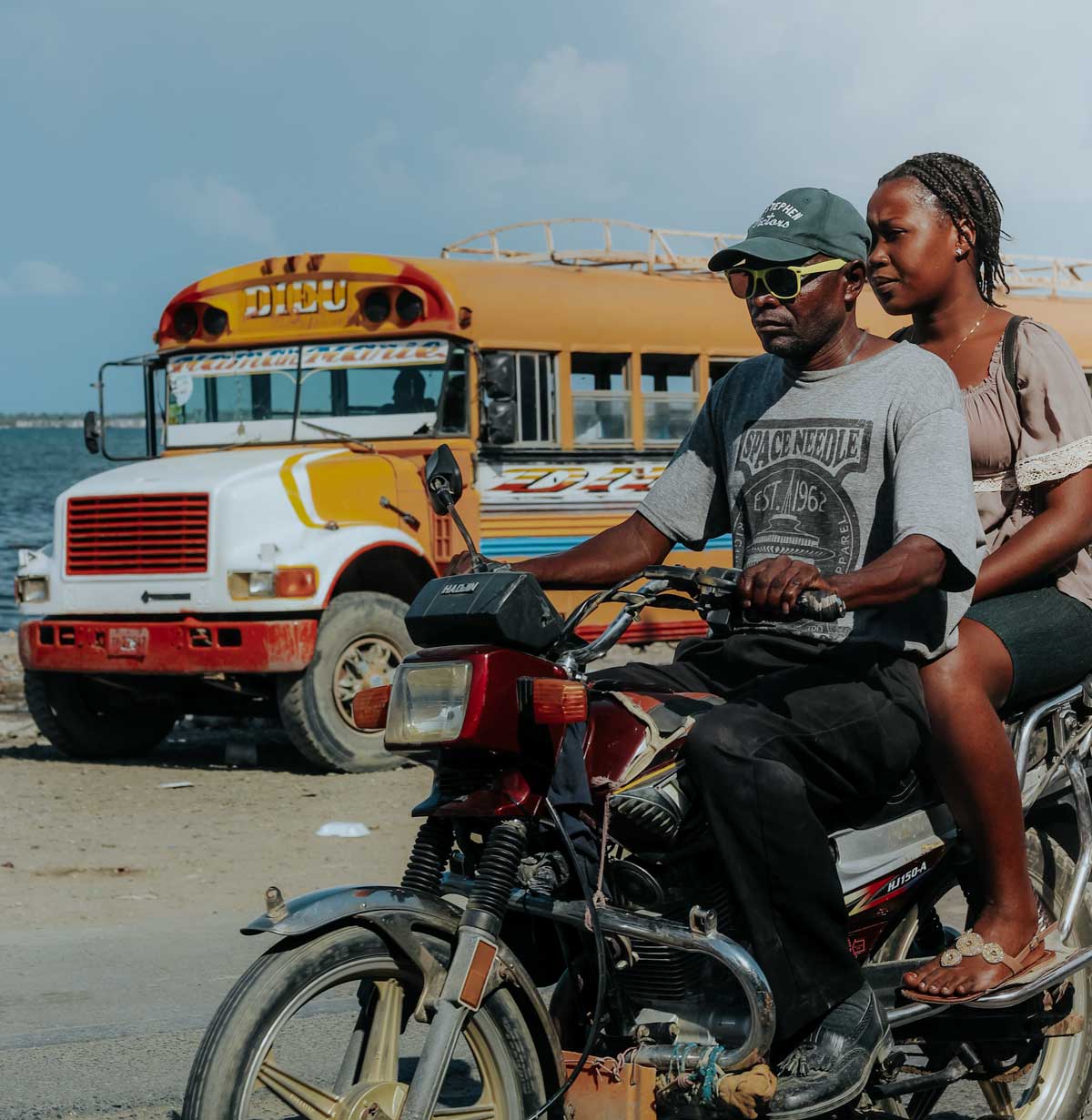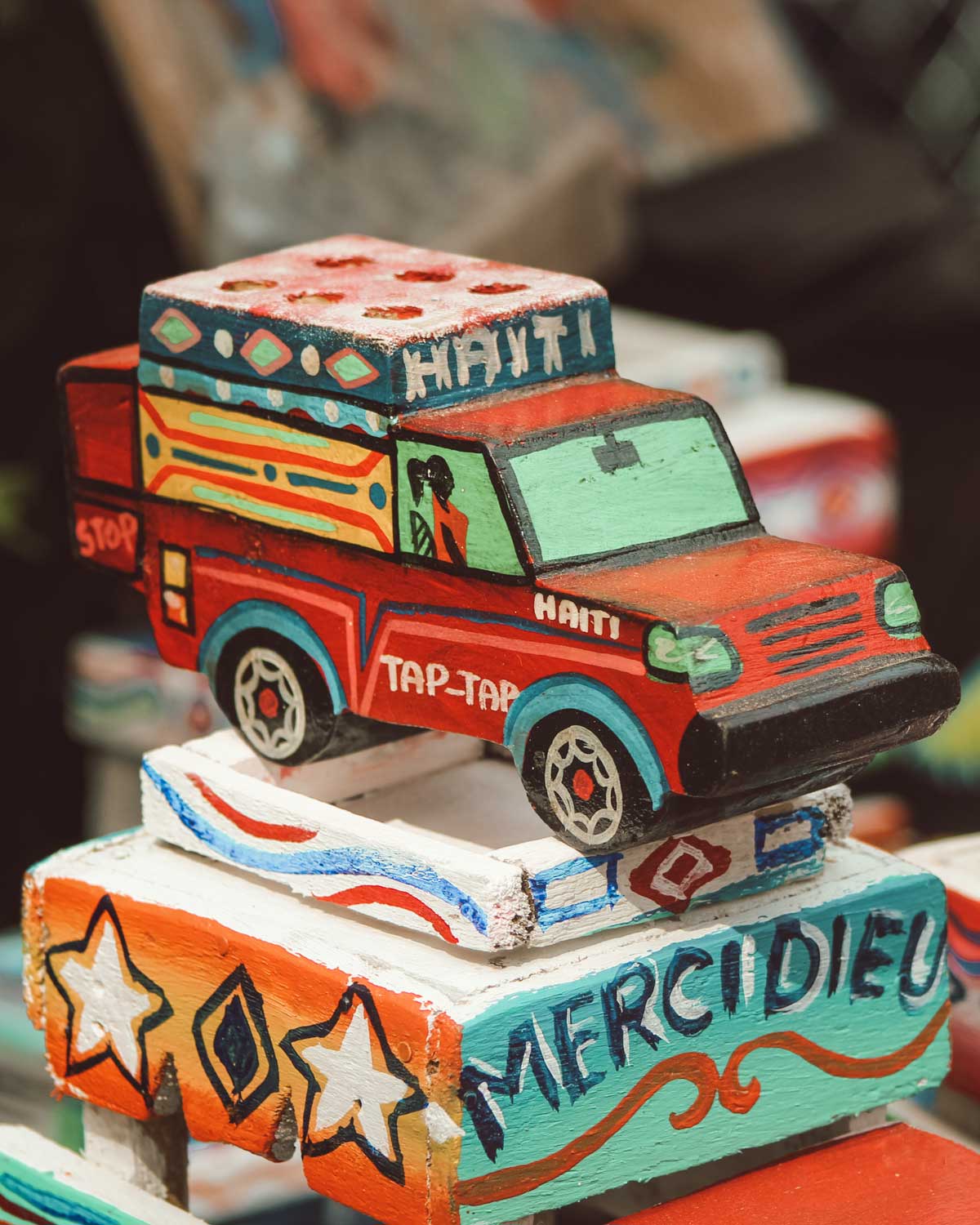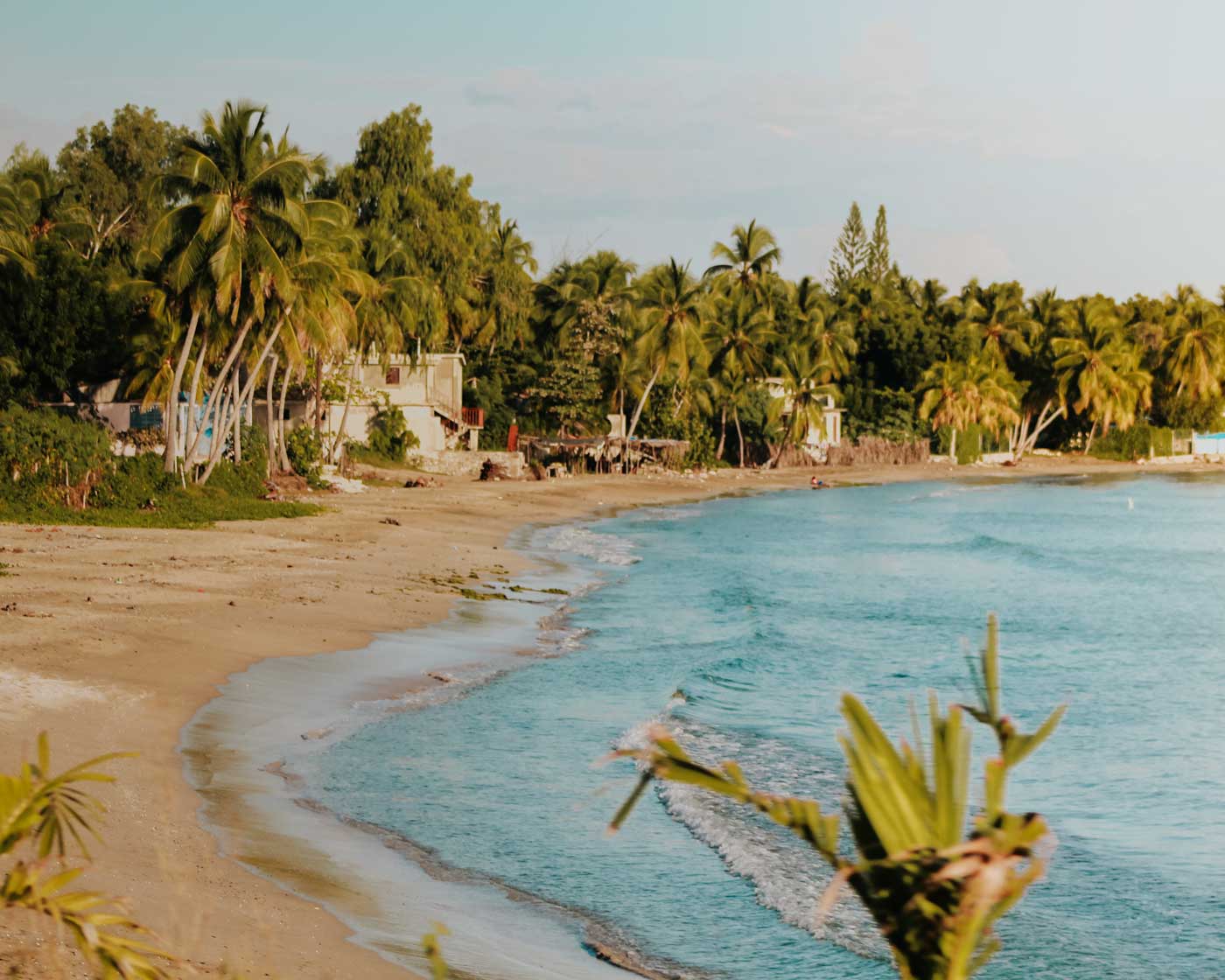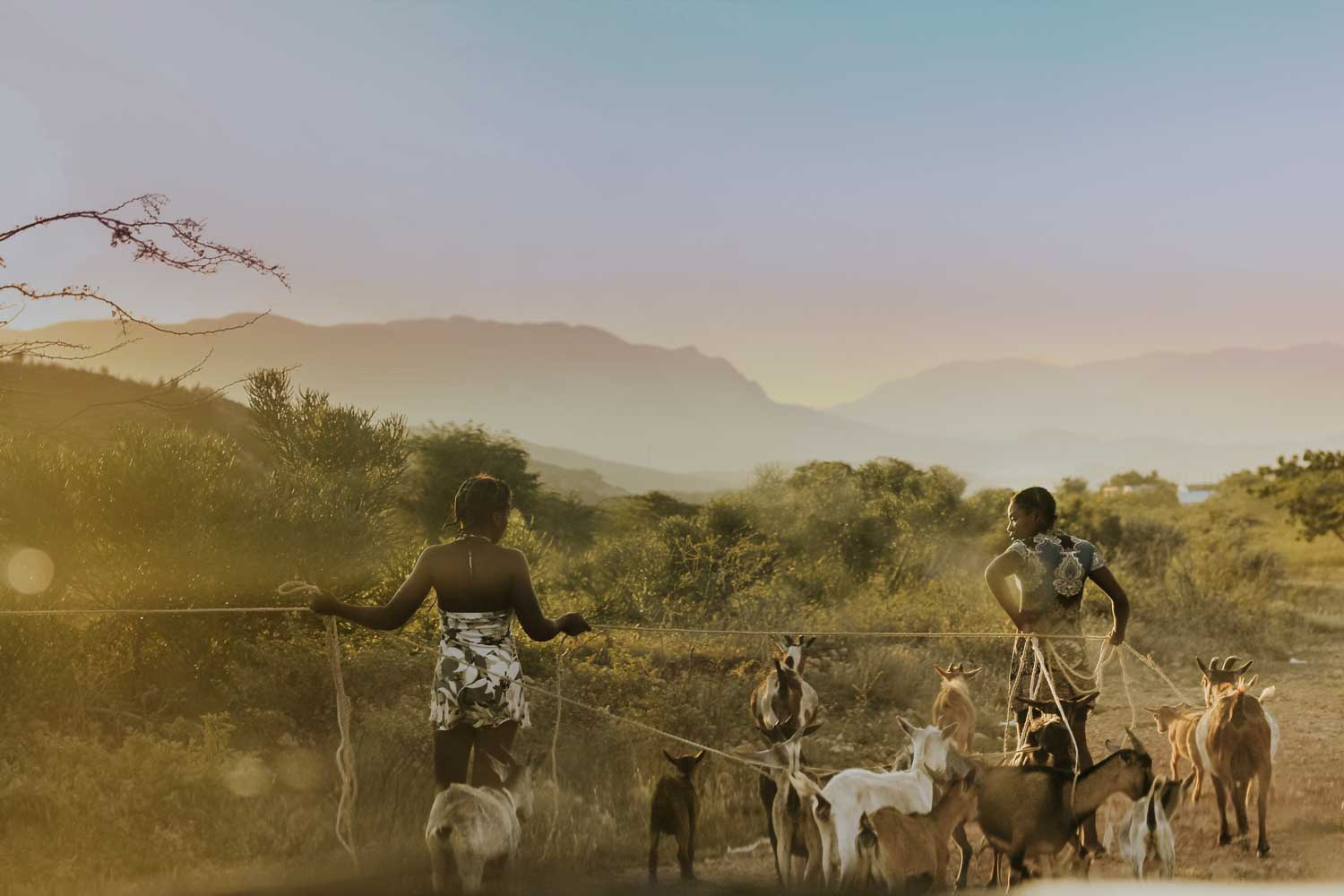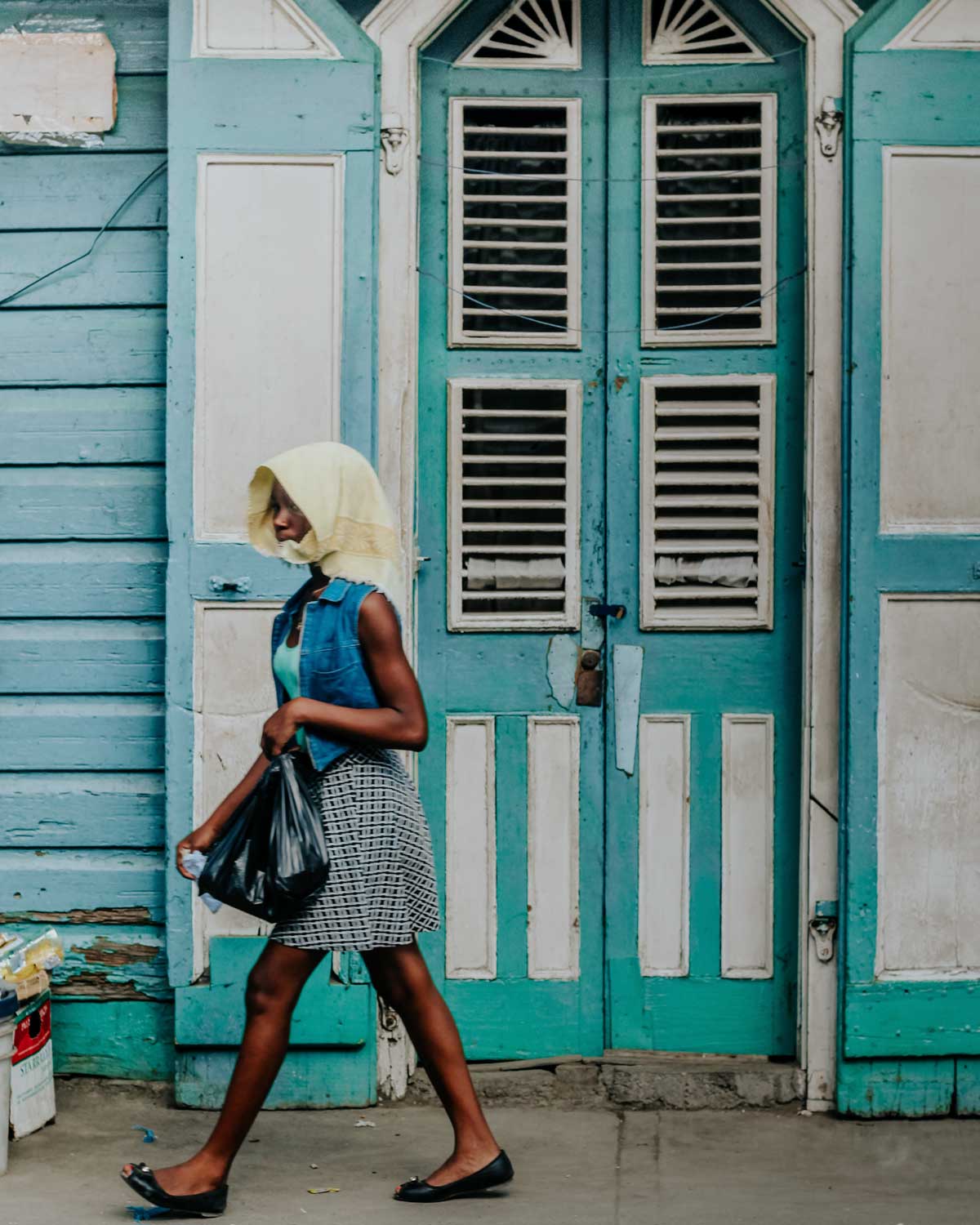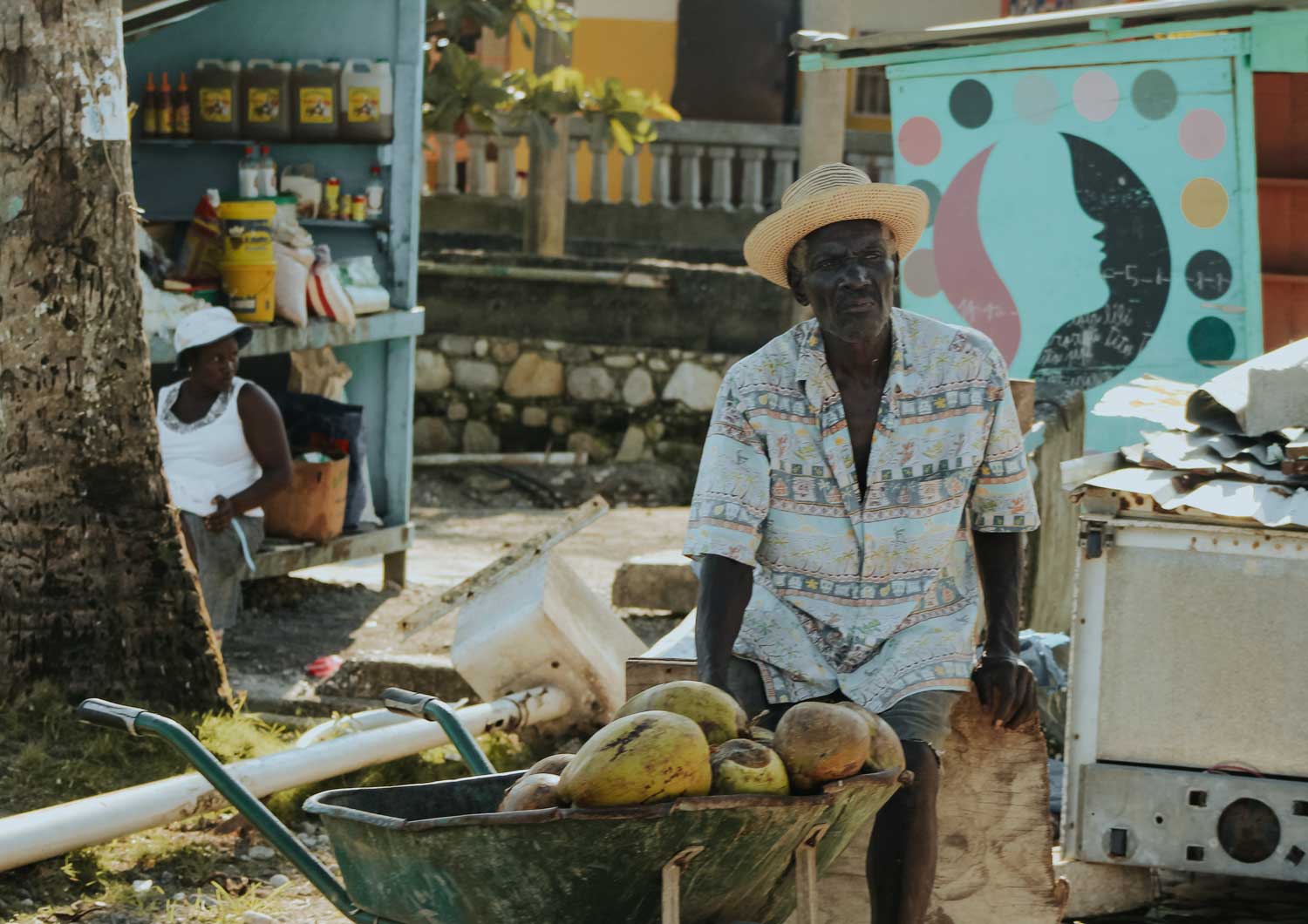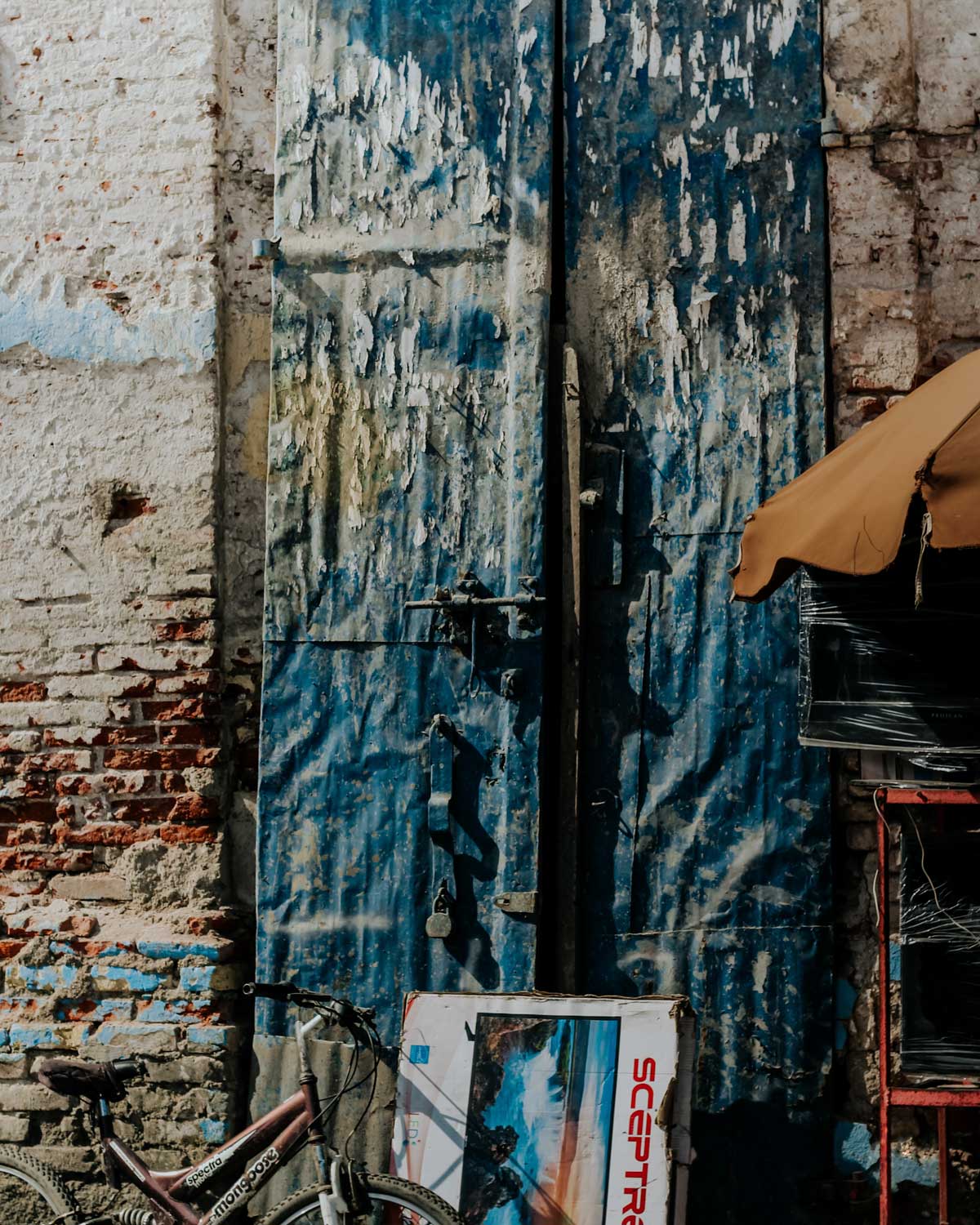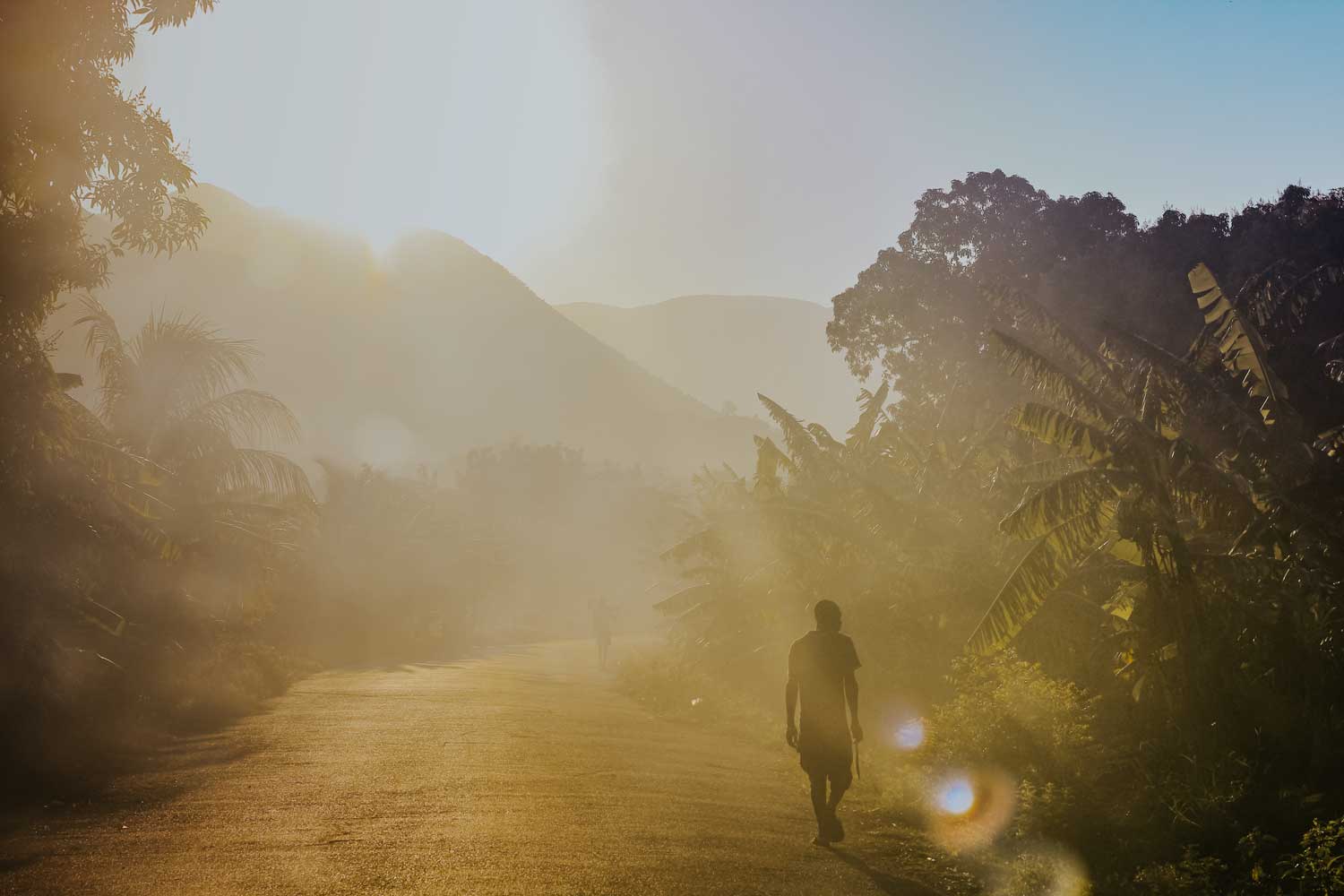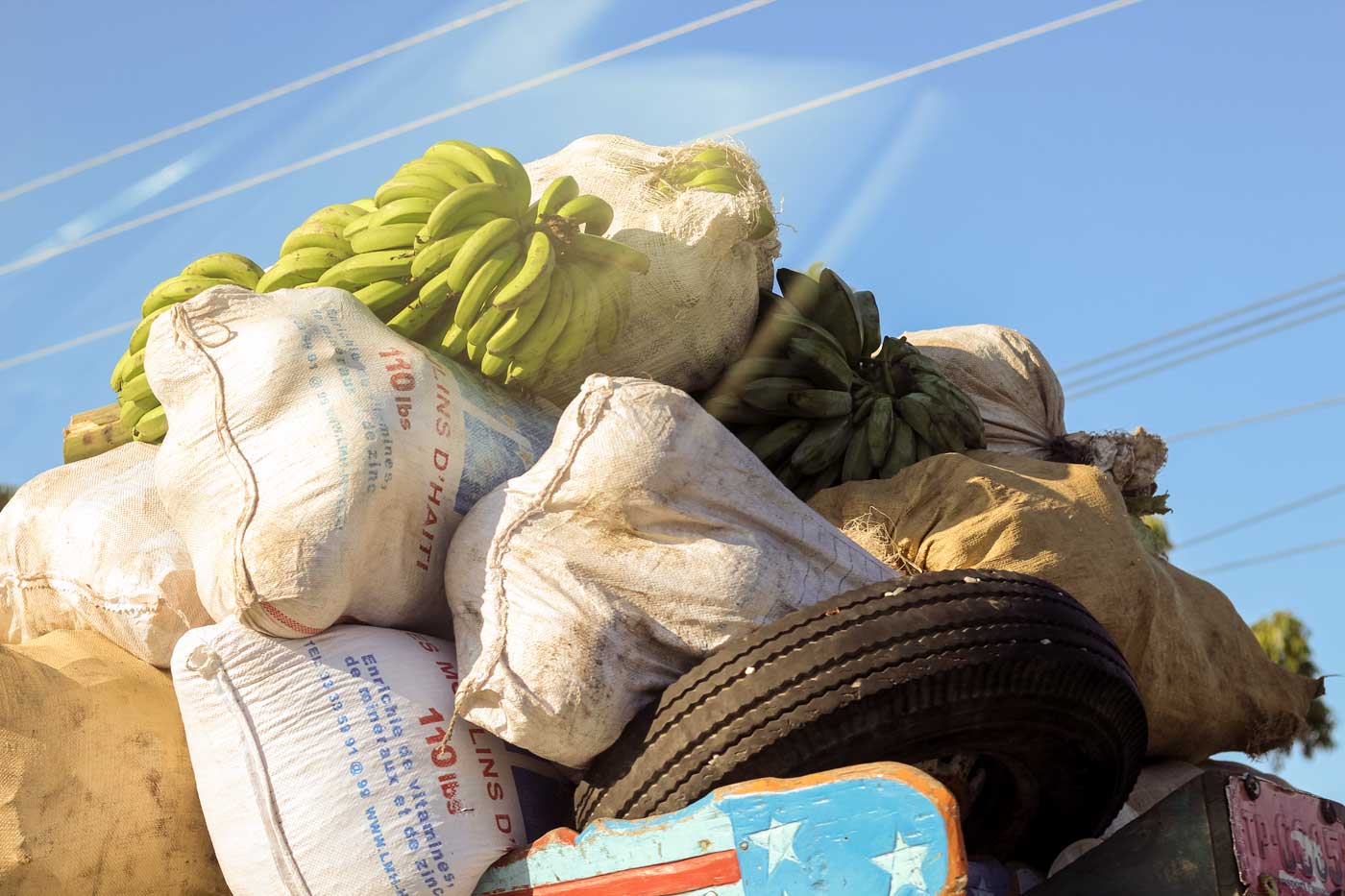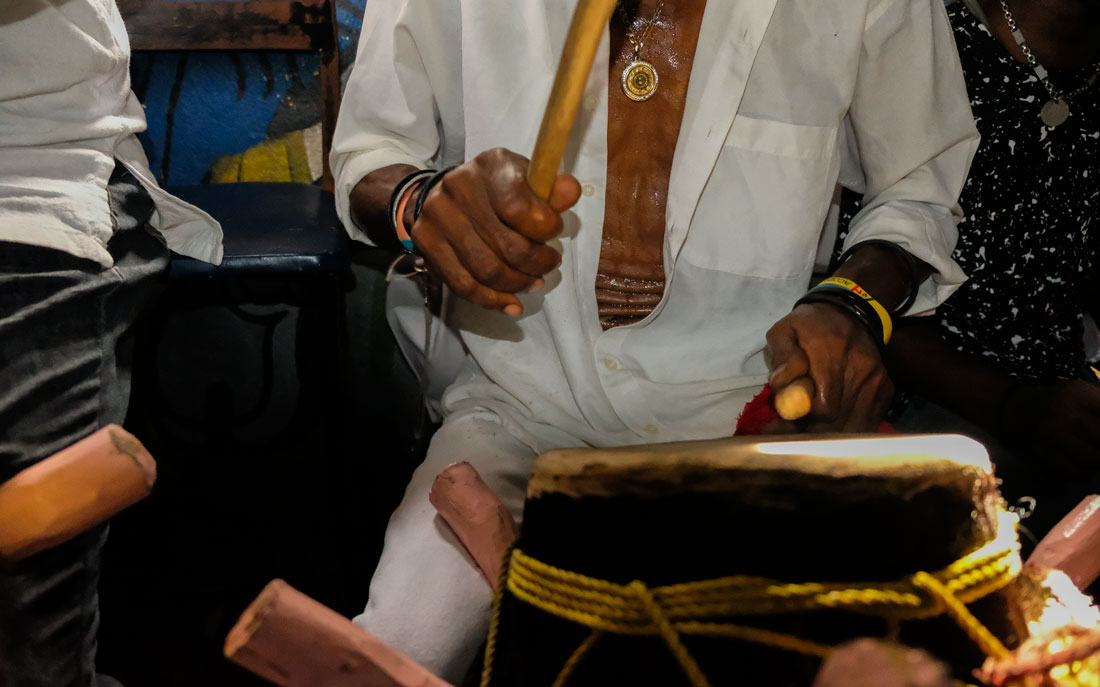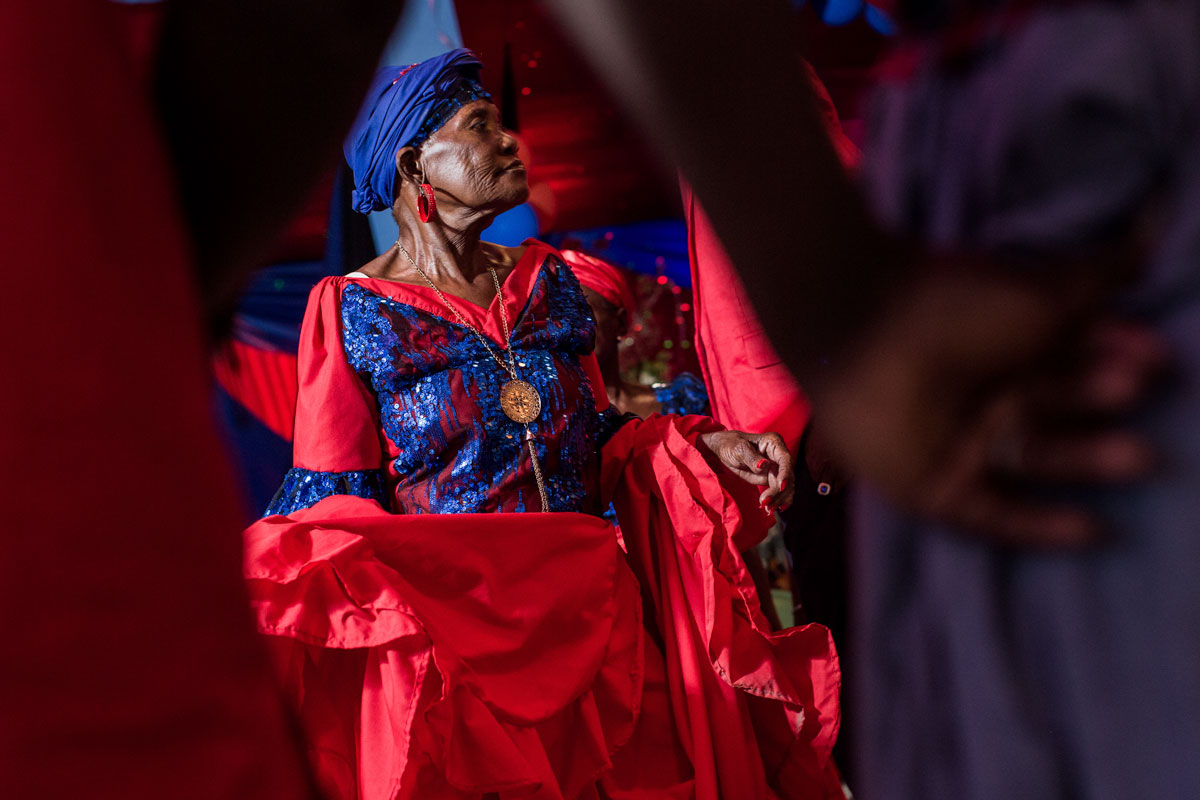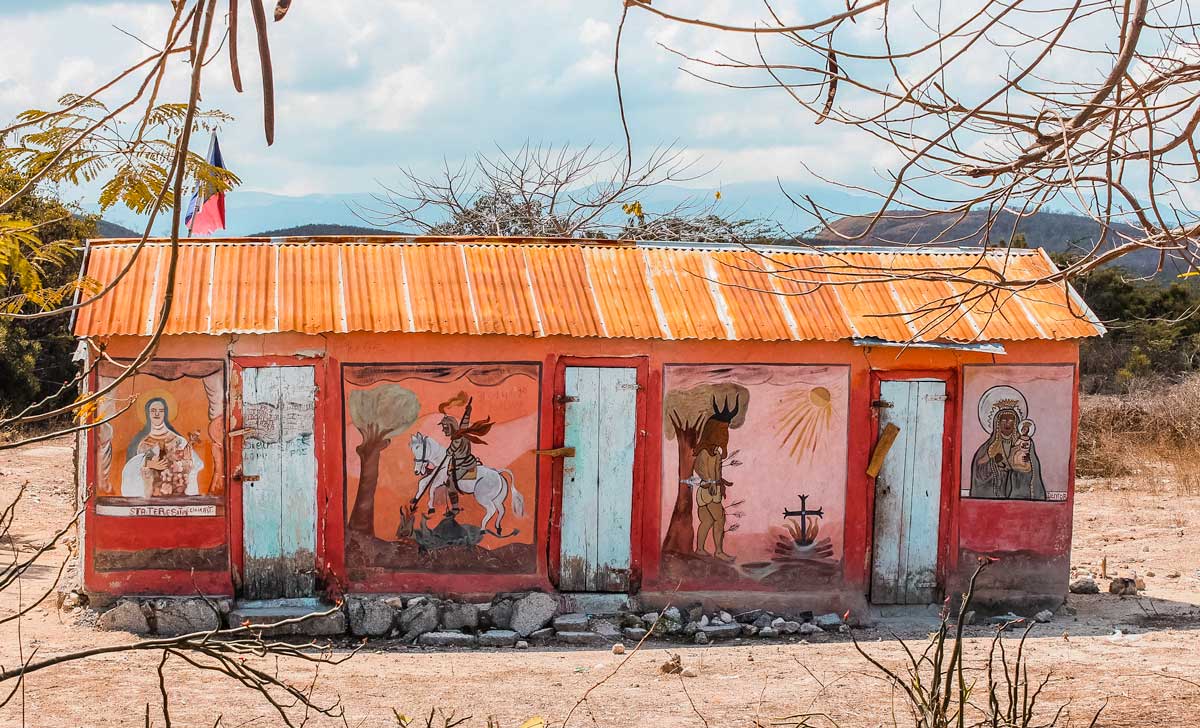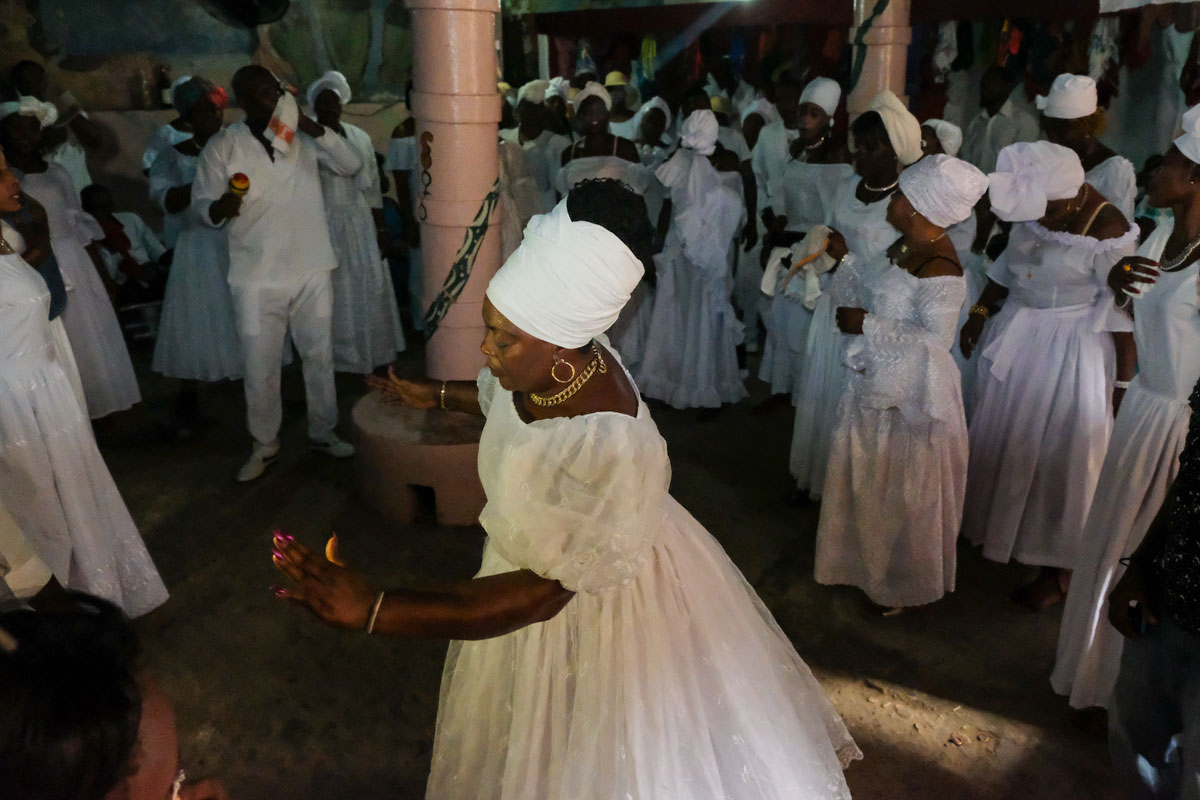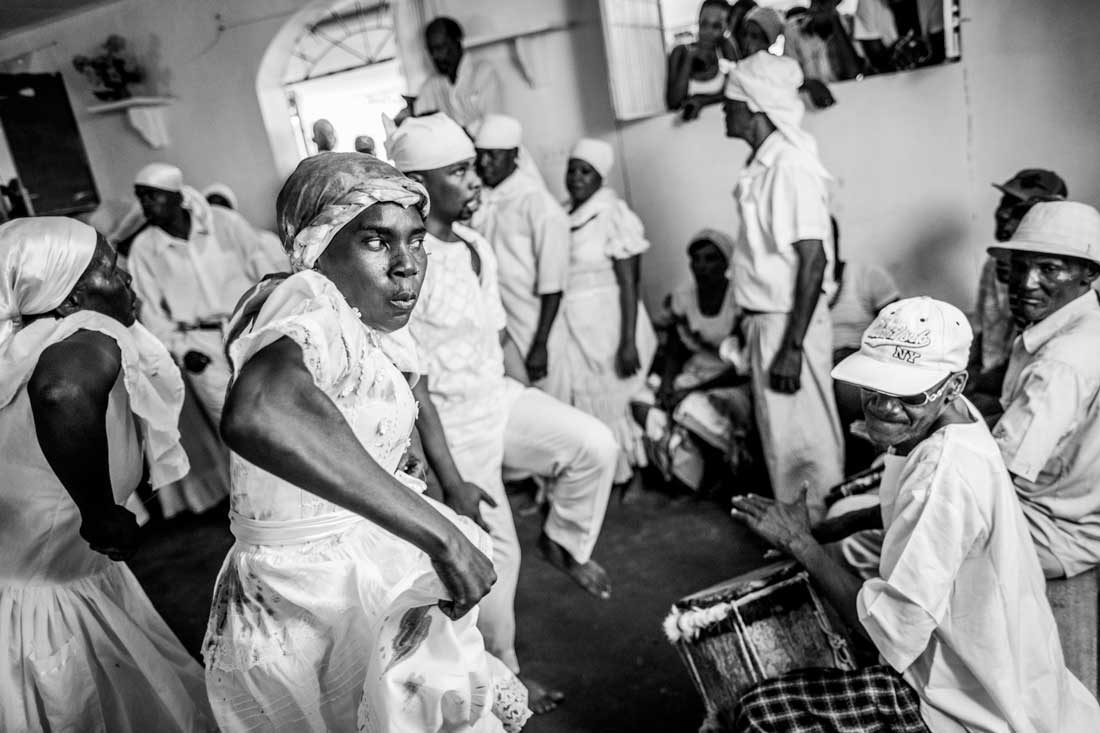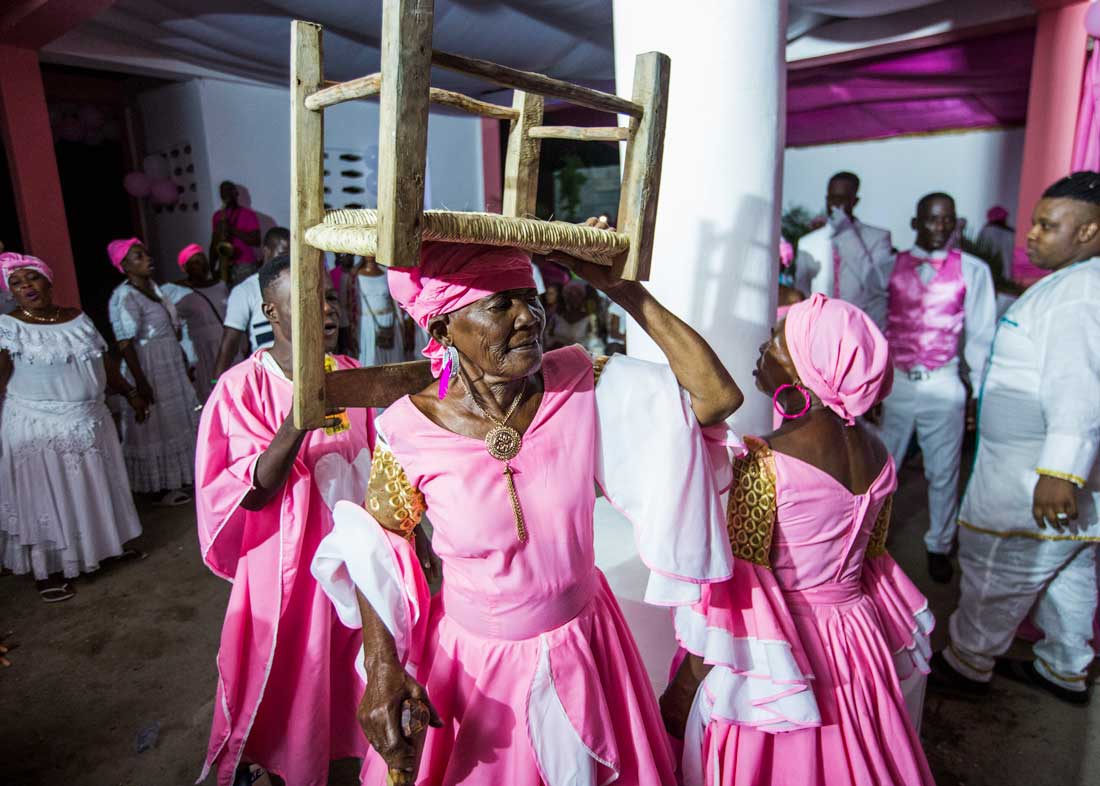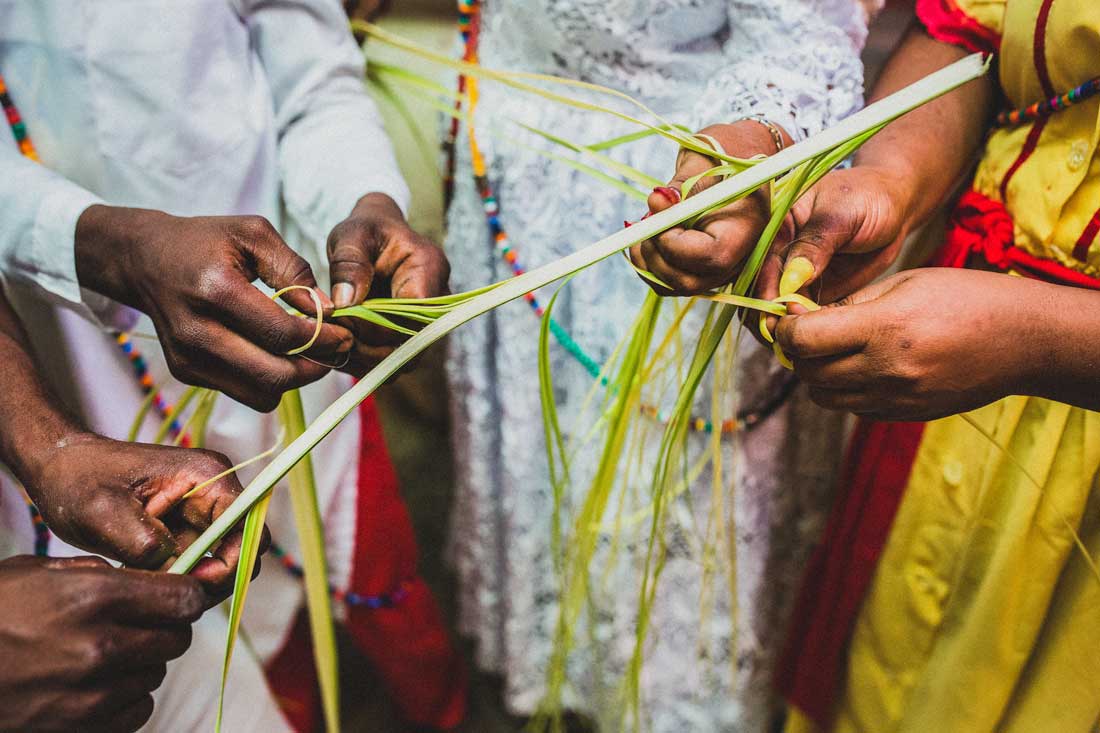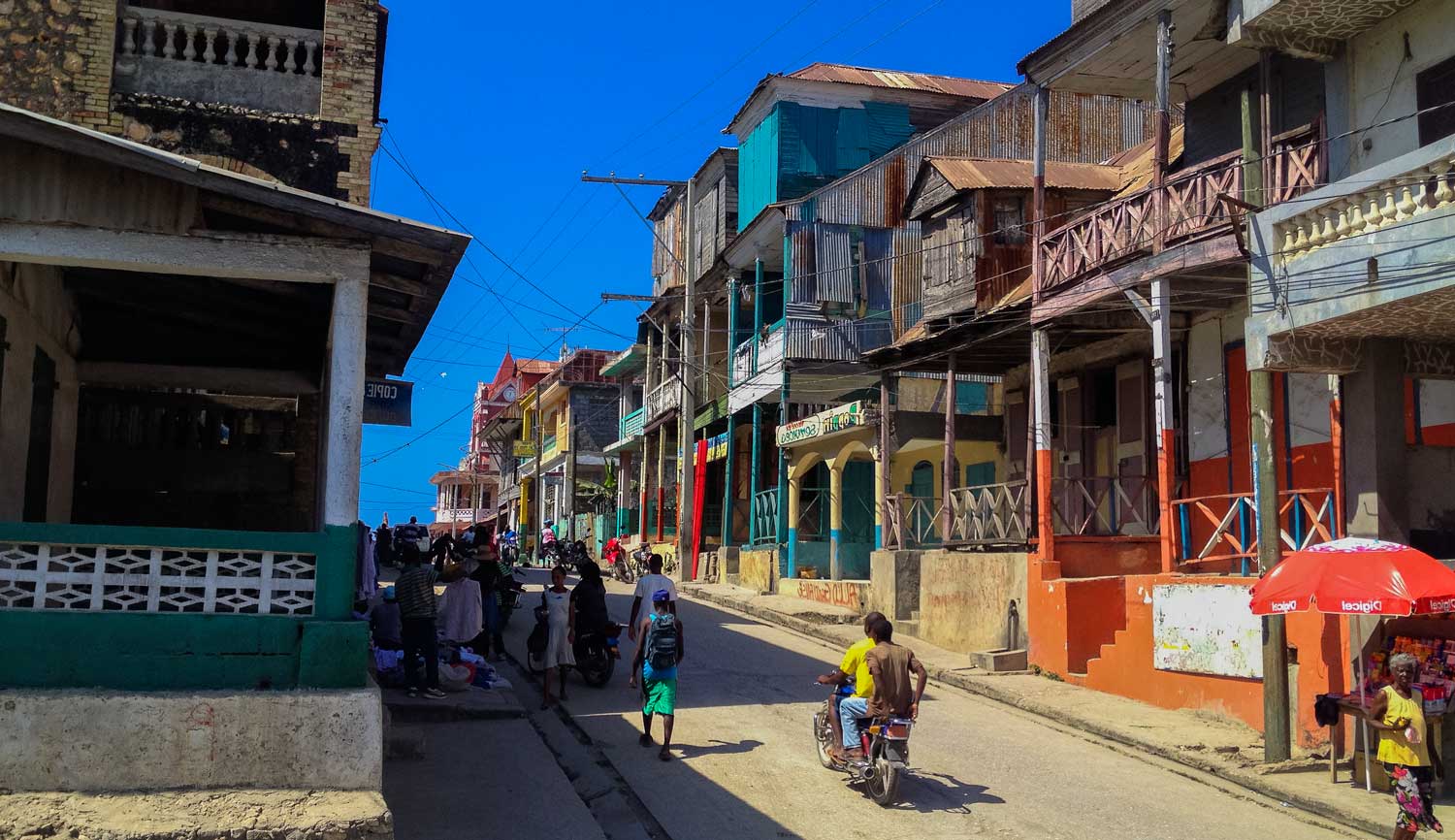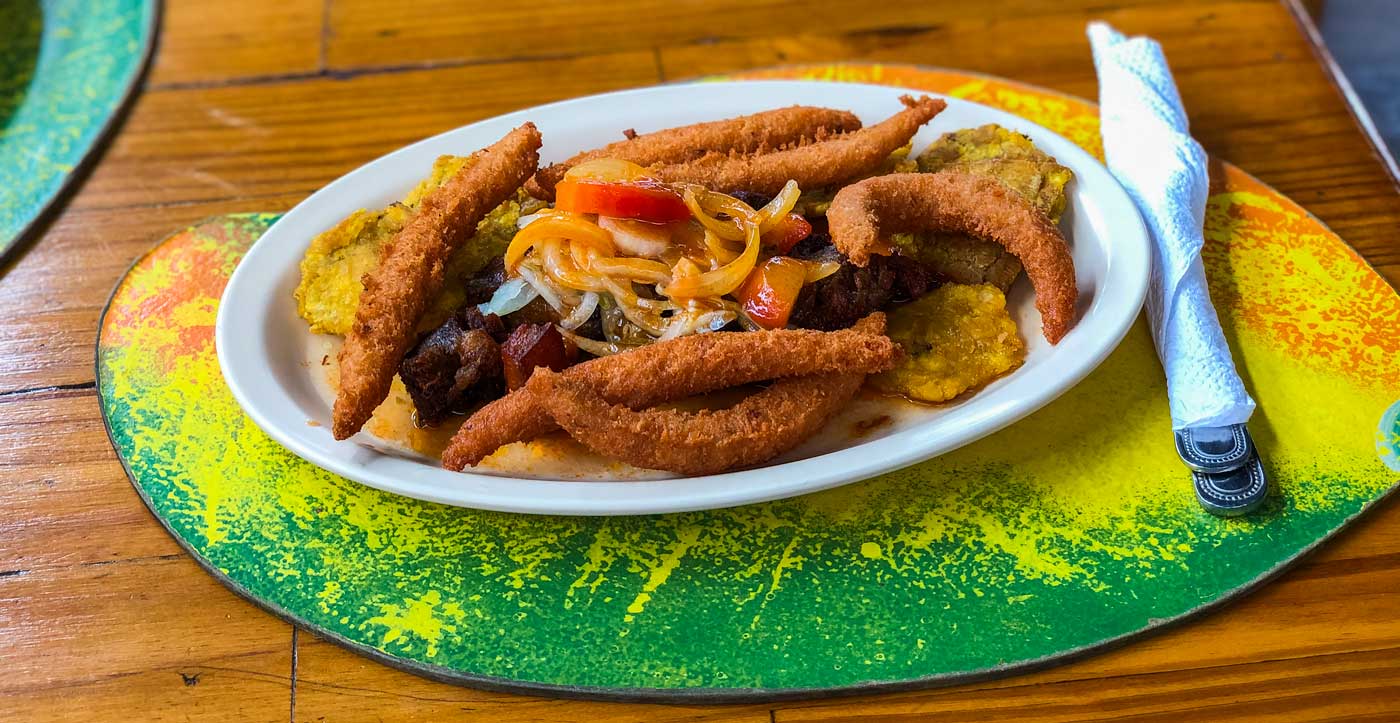
Photo: Anton Lau
15 Creole Feasts That Will Make You Want to Visit Haiti
Bold flavours, bright colours and a dash of West Indies spice – get ready for Haiti’s creole cuisine
Haiti is a land of bold flavours, bright colours, intoxicating music, mischievous spirits and a heady mix of cultures. Haitian creole cuisine is built on fresh seafood, island-grown greens and exotic fruits, all full of West Indies spices and an often surprising mix of elements both familiar and strange.
The fast-service restaurant concept hasn’t yet washed ashore in Haiti, so be ready to lean into the luxury that is island time: even in the capital city, everything has an unhurried, unpretentious atmosphere. Sipping rum sours in a palm-fringed patio or lounging around in an airy, high-ceilinged colonial dining room while you wait is a great way to sink into the Caribbean vibes.
Here is our ultimate guide on where to find the best Haitian eats for every taste:

Photo: Anton Lau
1. Fritay at 5 Coins
The cornerstone of Haitian cuisine, fritay is the best place to start your Haitian food journey. 5 Coins is one of the most well-known names in the business, with five kitchens throughout metropolitan Port-au-Prince. They offer all the classic fritay dishes: bannann peze (fried plantains), griyo (fried pork), akra (malanga fritters), lam fri (fried breadfruit) and fried chicken – all supplemented with Caribbean staples – rice and peas – or specialty sides.
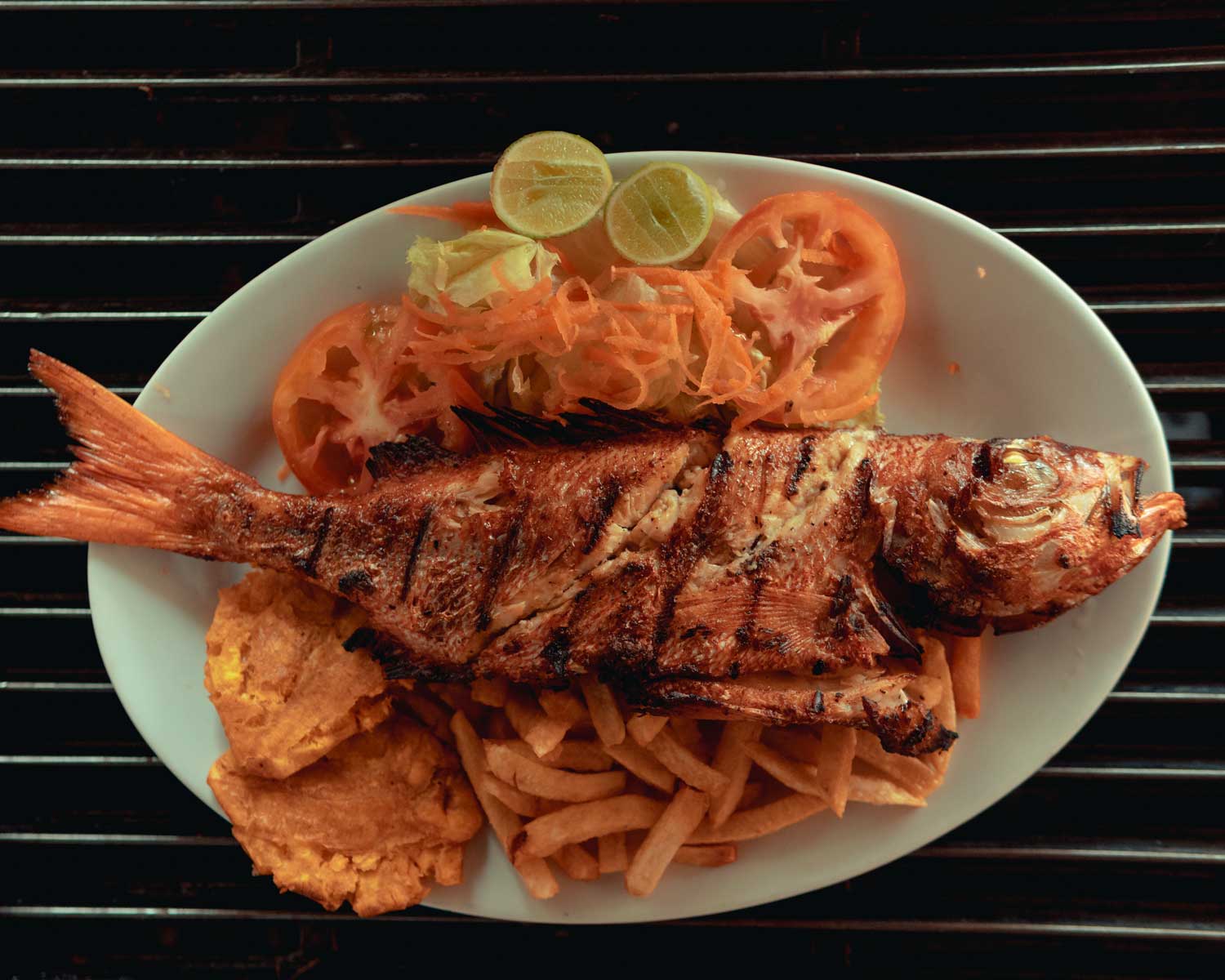
Photo: Alain David Lescouflair
2. Fish at Le Coin des Artistes – Vivano
Seafood straight from the surf is unbeatable. For the best fresh fish in Port-au-Prince, drop into Le Coin des Artistes — Vivano. Because their fish is always sustainably caught on their own restaurant-owned properties, your meal is supporting best-practice fishing in Haiti. You can ask for your fish to be either pwason griye (grilled) or an sòs (stewed).

Photo: Alain David Lescouflair
3. Gratine lanbi at Gingerbread Restaurant
Head downtown to the Pacot district for the treasure that is Gingerbread Restaurant. Their gratine lanbi (conch gratinée) alone is worth the trip. Locally known as lambi, conch is a mollusc native to the waters of the Bahamas but popular throughout the Caribbean islands. A step above the standard lanbi an sòs (stewed conch), this is a Haitian foodie experience to savour. The rich sauce of the gratinée envelops tender bits of conch, rendering them even more flavorful than they are naturally. A real culinary delight!

Photo: Alain David Lescouflair
4. Shrimp pizza at Yanvalou
Interested in what Haitian cuisine can do when it fuzes with food from other countries? Look no further than Yanvalou’s shrimp pizza! A specialty of the house, it’s the perfect cross between the mellow, indulgent feeling you get from enjoying pizza, heightened by the fresh taste of tender bits of shrimp scattered on top. Down a slice along with a rum sour in the leafy patio.
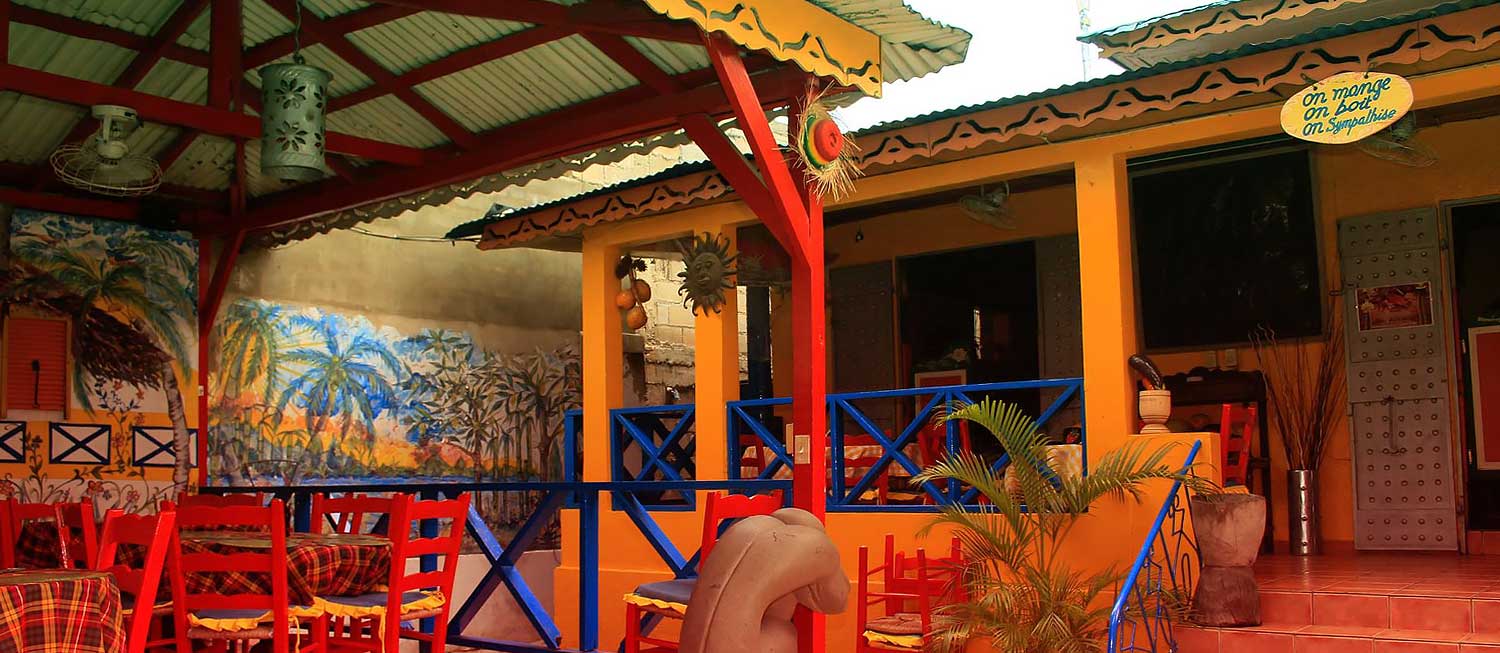
Photo: La Coquille
5. Buffet at La Coquille
Come hungry to La Coquille! This popular Pétion-Ville restaurant houses one of the most well-known Haitian cuisine buffets in the capital. Work your way through fried pork, fried chicken, stewed conch, and goat — alongside a selection of rice-centric sides, depending on what is available that day. White rice and black bean sauce, rice and peas, djondjon rice…dessert is included as well!
6. Griyo (fried pork) at Au Bon Griot
A quick drive outside of Pétion-Ville you’ll find Au Bon Griot, one of the best places in the area of Boutilier for griyo (fried pork). While it’s one of those hole-in-the-wall places, it definitely is somewhere worth stopping. Made fresh to order, the griyo comes with a generous helping of fried plantains and pikliz. What better way to enjoy griyo than overlooking the city of Port-au-Prince?
7. Fettucine Djondjon at Karibe Hotel
If you’ve tried djondjon rice, you know this tiny mushroom packs a punch. Native to Haiti, djondjon mushrooms are known for their “exquisite color, taste and aroma.” For a dish that makes the most of this unique ingredient, stop by the restaurant at Karibe Hotel in Juvénat for their specialty – djondjon fettucine! The rich, velvety pasta sauce is made inky black by the exotic djondjon.
8. Soup joumou (pumpkin soup) at Kinam Hotel
You’ve read all about it – now treat yourself to a warm and comforting bowl of soup joumou (pumpkin soup) at Pétion-Ville’s Kinam Hotel. Filled with pasta and rustic chunks of carrots, potatoes, and meat, this soup is an already hearty meal, but some people enjoy it with freshly toasted bread, which you can request. Soup Joumou on Sundays is a cultural institution in Haiti, and there’s no better way to kick off your week!
Outside Port-au-Prince?
That’s Port-au-Prince covered, but what about the rest of the country?
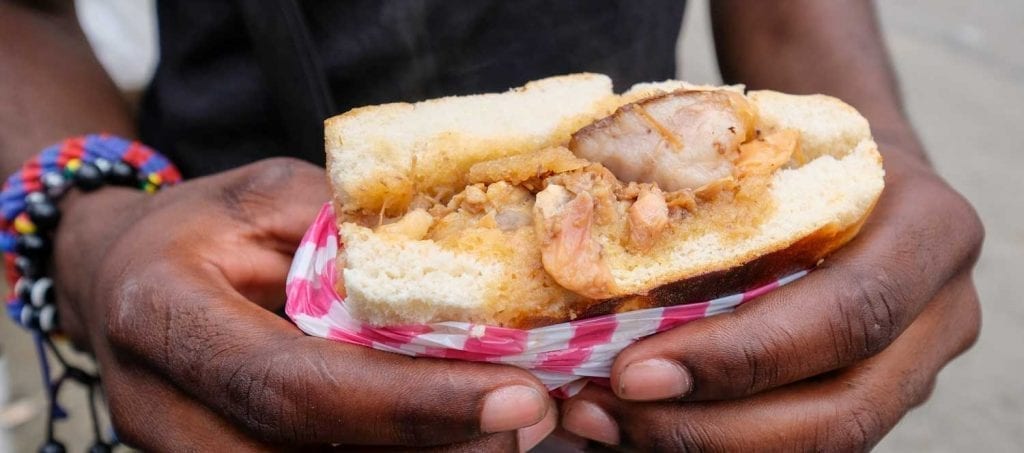
Photo: Franck Fontain
9. Bib (fried pork sandwich) in Kenscoff
Out touring the hills of Thomassin or Fermathe? You’re not far away from the area of Kenscoff, where the specialty of bib is extremely popular. What is a bib? Simply put, it’s a sandwich that features fried pork meat and pikliz (a spicy relish and a crucial in Haitian creole cuisine) in soft, pillowy bread. No formal restaurant here, just a hole-in-the-wall place just past the police department of Kenscoff, but a must-try foodie experience nonetheless!
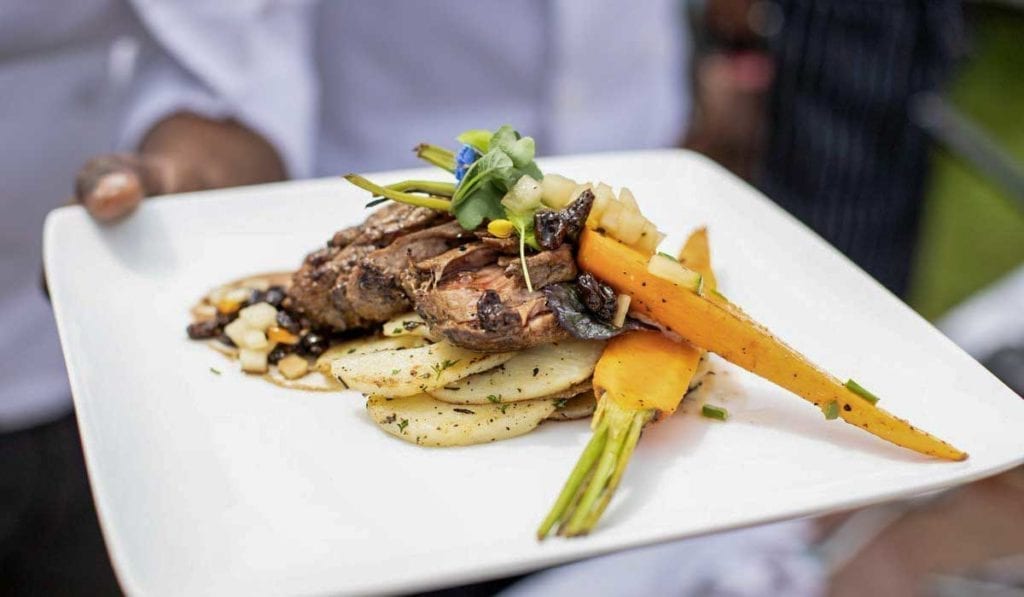
Photo: Ranch Le Montcel
10. Kabrit griye (grilled goat) at Le Montcel, Kenscoff
Sustainably-raised meat is more common than you might expect in this island nation. One of the best places to taste the creole dish kabrit griye (grilled goat) is Le Montcel. A sprawling property set into the hills of Kenscoff, Le Montcel is able to grow a lot of its own produce and raise its own animals. This makes for one of the most succulent griyo, which pulls apart wonderfully!
11. Mayi moulen ak fèy (cornmeal and spinach) at Boukanye, Cap-Haïtien
One of the pleasures of waking up in Cap-Haïtien is getting breakfast on the boulevard. We recommend stopping by Boukanye, where you can enjoy a hearty, flavorful breakfast of mayi moulen ak fèy!
While mayi moulen (polenta) is usually eaten as the major part of a midday or evening meal, it is prepared here for breakfast as mayi moulen ak fèy, served with spinach and kipper. Even better with freshly sliced avocado! In season (roughly august-november) avocados are so abundant on Haiti that you can afford to eat them for breakfast every day – and pay off your mortgage too.
12. Poul ak nwa (stewed chicken and cashews) at Boukanye, Cap-Haïtien
Visit pirate-themed bar and grill Boukanye in Cap-Haïtien to try the North Haitian specialty of poul ak nwa (stewed chicken and cashews). Cashews grow around Cap-Haïtien and are used liberally in local cuisine. In this signature northern dish, succulent strips of chicken stirred through a flavorful, savory sauce, and topped with halved cashews. Usually enjoyed with a generous side of white rice, or rice and peas.
13. Lanbi an sòs (stewed conch) at Lakay, Cap-Haïtien
Lakay in Cap-Haïtien is one of the best places to get lunch. If you happen to be in the area, we recommend getting the lanbi an sòs (stewed conch)! The stewed-to-perfection conch melts in your mouth. The house standard is served with rice but you can request fried plantains or fried potatoes to make for an even more robust meal – great if you’ve been out hiking or swimming all morning.
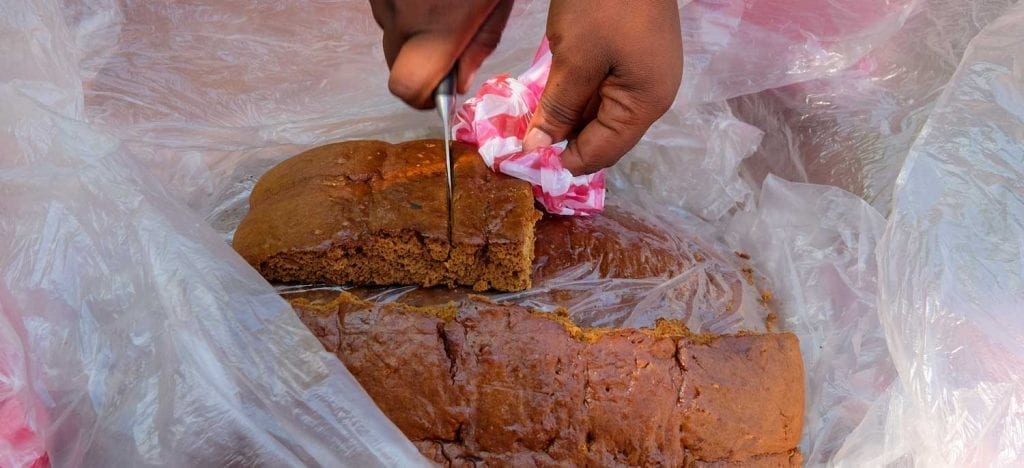
Photo: Franck Fontain
14. Bonbon siwo (Haitian gingerbread) from Les Cayes
Wander up to the crossroads of Quatre-Chemins in Les Cayes to find the delicacy that is bonbon siwo (Haitian gingerbread). Thick, sweet, and filling, it is the kind of dessert you enjoy with a cup of coffee or tea. It’s like giving your tastebuds a big warm hug.
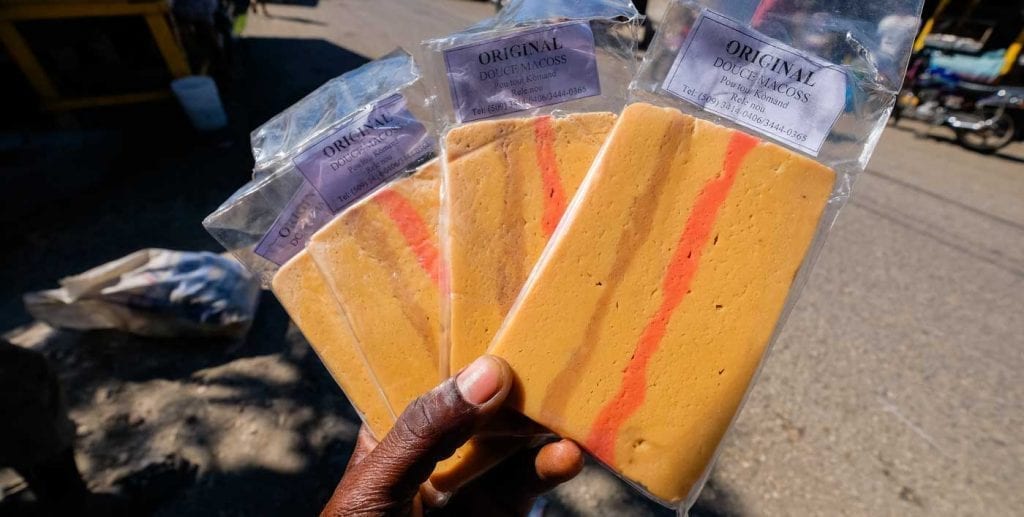
Photo: Franck Fontain
15. Dous makòs (milk fudge) from Petit-Goâve
For those who have a curious sweet tooth, the town of Petit-Goâve is the place to go. Here you’ll find dous makòs (milk fudge); a wonderfully decadent tri-color sweet treat. Sugar, milk, condensed milk, and a slew of warming spices like vanilla, nutmeg, and cinnamon come together over high heat, are poured into molds to cool, then sliced into the delicious, rich slabs of dous makòs fudge.
Written by Kelly Paulemon.
Published May 2021
Top things to see in Haiti

Paradise for your inbox
Your monthly ticket to Haiti awaits! Get first-hand travel tips, the latest news, and inspiring stories delivered straight to your inbox—no spam, just paradise.




